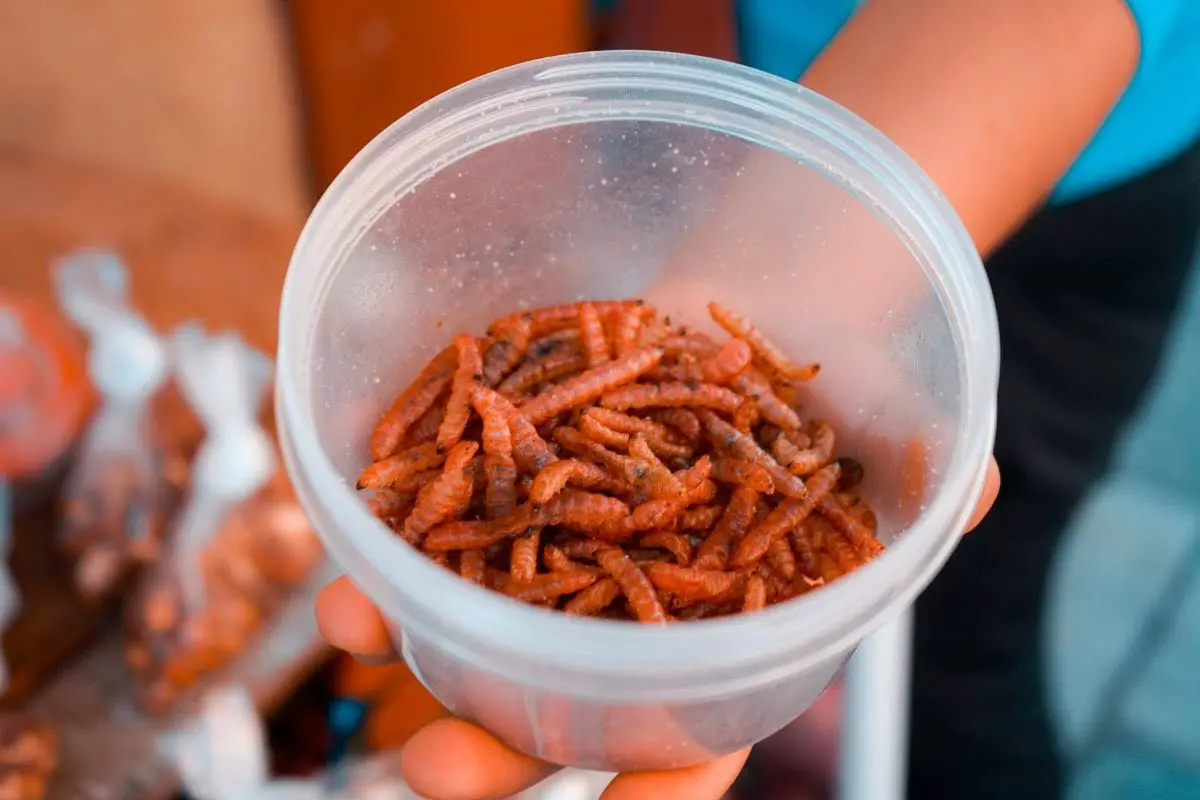Mealworms Compost: Is It The Next Big Thing in Sustainable Gardening?
One of the best things about my bokashi bucket is that nothing survives in that steamy anaerobic bin! Not having insects and other creatures crawling around my food scraps is a big relief!
But when I empty my Bokashi scraps downstairs into my compost is a different story! I often find little worm-looking creatures crawling there.
Worm Composting vs Mealworms In Your Compost
Worm composting — or vermiculture — takes advantage of the worms’ natural ability to consume decaying material and turn it into fertile soil.
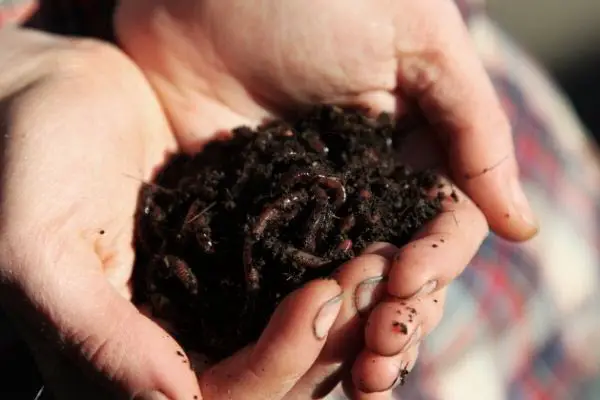
Red wigglers and redworms are the most popular species used in vermiculture. But they’re not the only worms capable of turning old food and plant matter into gardening gold. Sadly, mealworms can’t do that.
Mealworms aren’t the worst thing to find in your compost pile. Yet they probably won’t do much good, either.
You can never be too careful about which creepy crawlies you let take refuge in your compost heap.
What Are Mealworms?
First things first: Mealworms are not actually worms. They are larvae.
About 88% of insect species go through full metamorphosis, which includes an egg, larvae, pupae, and adult stage.
One of the most famous transformations is that of the butterfly or moth. These insects start out as eggs that hatch into caterpillars (larvae). The caterpillars then form cocoons (pupae) and emerge as winged adults.
But don’t expect a mealworm to transform into a beautiful butterfly!
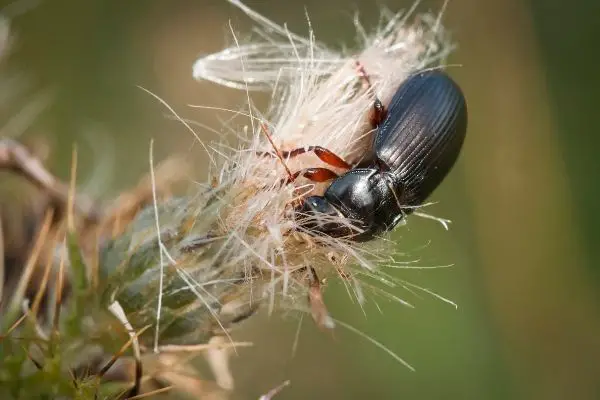
Mealworms are the larval stage of Tenebrio molitor, a species of darkling beetle found throughout most of the world. While these beetles aren’t native to many of their home environments, they are non-invasive.
Despite being an immature form of Tenebrio molitor, many mealworms spend more time as larvae than as adults.
Mealworms will remain in the larval stage for at least 6 weeks. Some mealworms will stick around for 6 to 9 months before continuing on as pupae.
What Are Mealworms Used For?
You could easily rewrite the phrase “breeding like rabbits” to include darkling beetles. These insects reproduce at an extremely high rate. So farming mealworms is very efficient.
But why would someone want to purposely farm these creepy crawlies?
Mealworms are a great source of protein and fatty acids. Living and dead (often freeze-dried) mealworms are sold commercially for a variety of reasons.
Many pet owners rely on mealworms to supplement their animals’ diet — rodents, reptiles, birds, and fish all love the larvae. These larvae are also commonly used as wild bird food or fish bait.
Can you use mealworms as fertilizer?

You may have heard about using mealworm fertilizer — sometimes called mealworm compost — in the garden. These products are usually made up of castings rather than whole larvae.
Castings are the waste (excrement and exoskeletons) produced by mealworms. This waste is also called frass.
This waste is full of key plant nutrients, including nitrogen, phosphorus, and potassium. Frass resembles sand or dry sawdust and is easy to add to potting soil or a garden bed.
Research shows that frass contains less water-soluble phosphorus than traditional fertilizers. Water-soluble phosphorus is a major contributor to fertilizer run-off and phenomena like algae blooms.
Are Mealworms Good For Compost?
I suspect there are two reasons why one might be wondering this:
1) You’re interested in using frass in your garden and think adding mealworms to your compost is the most logical solution.
Or,
2) You’ve found what you suspect are mealworms crawling around in your compost heap and aren’t sure what to do next.
Unfortunately, mealworms don’t offer the same benefit as true worms do to the composting process.
While mealworms compost simple organic matter like dried leaves or grains, they’re less inclined to eat things like decaying fruit and vegetables. That leaves out a majority of your compost pile as a potential food source.
There’s also the issue of mealworms preferring a cold environment. If you find mealworms in your compost, it’s a clear sign that the pile is too cool for efficient decomposition.
Finally, mealworms won’t stay in the larval stage forever.
Although they don’t offer any benefits, mealworms are relatively harmless to a compost pile. Once those mealworms become adult beetles, though, they’ll start reproducing and rapidly take over your compost, garden, and lawn.
How To Treat Mealworms In Your Compost
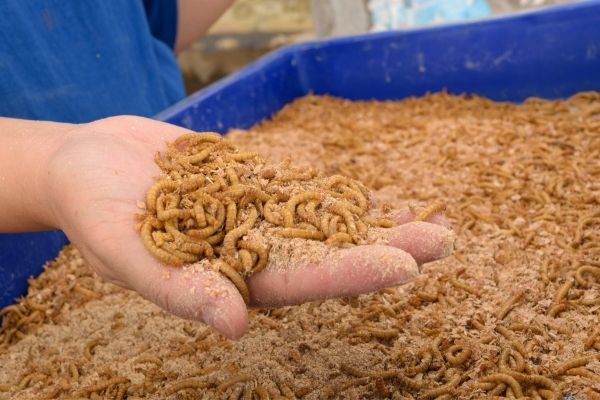
The best way to address mealworms in your compost is to treat the problem at the source.
Mealworms will only stake a claim to your compost heap if it is relatively cool. Not only does the cooler environment attract unwanted guests but it can also interfere with decomposition.
Add carbon-rich (a.k.a. brown) materials to your compost to raise the temperature. Examples include dried leaves, straw, wood chips, and cardboard.
If the infestation is serious, you may want to “bake” the compost in the sun. Spread thin layers of compost in direct sunlight to dry out before returning to your regular routine.
Is it really a mealworm?
Take the time to properly identify your compost squatters before addressing their presence.
You may still decide that your compost would be better off without a colony of bugs calling it home. But while mealworms can and do find their way into residential compost bins, they aren’t the most likely culprits.
Black soldier flies and rove beetles are a couple of garden-friendly insects that may lay eggs in your compost. At a glance, the larvae of these two species can be mistaken for mealworms.
Frequently Asked Questions
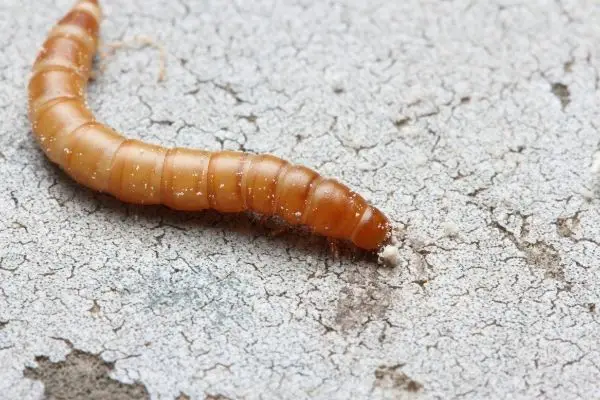
Do mealworms eat plants?
Mealworms are more likely to target fallen leaves and other debris rather than the plants themselves. Seedlings may fall victim to hungry mealworms.
At the end of the day, mealworms are scavengers. So while they won’t necessarily target your garden plants the way a caterpillar or aphid would, you can’t rely on mealworms to steer clear, either.
How do you keep darkling beetles out of your garden?
Darkling beetles are far from the most common garden invader. Yet pesticides aren’t very effective against these insects.
The best way to keep darkling beetles out of your garden is to avoid using soil and compost containing mealworms. Clear the area around your garden bed of fallen leaves and dense weeds. It’s also a good idea to place your compost bin as far away from the garden as possible.
Do mealworms bite?
While mealworms do have jaws, or mandibles, their mouths are too small to bite anything but their food. There’s no need to worry about the mealworms in your compost pile or elsewhere biting your skin.

